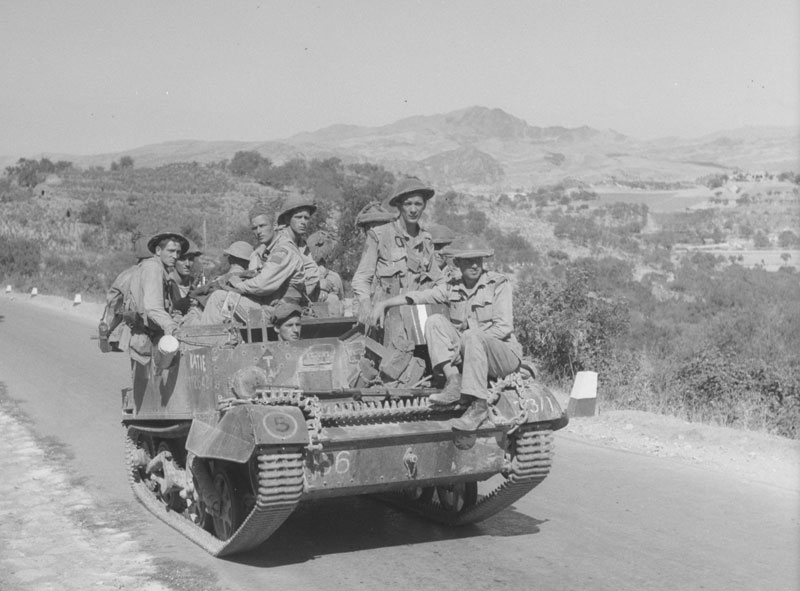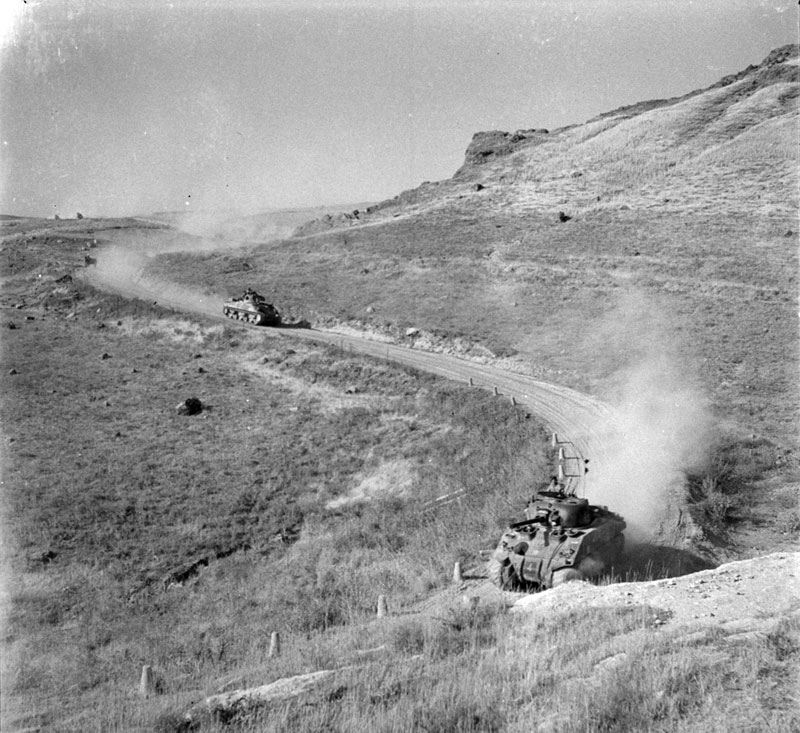
“These three hills dominated the entire alley eastward from Regalbuto,” wrote Lieutenant-Colonel Gerald Nicholson in The Canadians in Italy, 1943-1945. “There could be no assurance of safe passage for Allied troops along the river flats until they were denied to the enemy.”
A patrol by the Edmonton Regiment met no enemy on July 31 when it reached the foot of the first obstacle, Hill 736. A mule train was formed to carry the battalion’s mortars, ammunition, machine guns and rations to support the attack.
“In the open, and under what seemed to his platoon murderous fire, he dressed the wounds of each of the three in turn, found cover for them.”
On Aug. 3, the Edmonton Regiment started the advance up Hill 736. But the Germans had reoccupied the peak and were ready for them.
Slowed by rocky ground too hard to allow digging of slit trenches, targeted by aircraft, machine-gun fire and mortars, the men sheltered under overhanging cliffs and behind rocks.
The mule train scattered, delaying support and supplies.
As casualties mounted, Private John Low crawled out to help the wounded.
“To his comrades, the further advance of this soldier could only end in death, but to their amazement he continued on towards the wounded men,” reads his commendation for the Distinguished Conduct Medal.
“German fire appeared to centre around him. Bullets were seen kicking up the dust along the line of his path” as he crawled about 300 metres to reach the wounded. “In the open, and under what seemed to his platoon murderous fire, he dressed the wounds of each of the three in turn, found cover for them, and carried and aided them to it.”
While leading the forward platoon, Lieutenant John Dougan was wounded by machine-gun bullets in both arms and hands.
On Aug. 5, the Canadians started their final assault. A senior officer and both platoon sergeants were killed; the other senior officer was wounded. Junior officers took command.
“He could hold his revolver only by gripping it in both hands,” one witness recalled. Dougan led his platoon across a 300-metre stretch of open ground under continuous fire, led a charge on the enemy and captured the objective, earning a Military Cross.
That left Mount Revisotto and Mount Seggio, which were finally occupied Aug. 6.
After meeting heavy opposition on Revisotto on Aug. 5, the attack by two companies of the Edmonton Regiment was postponed, awaiting artillery support.
Mount Seggio was the job of the Princess Patricia’s Canadian Light Infantry (PPCLI), and they expected stiff opposition. Two PPCLI companies hopped a ride on a squadron of tanks setting out at night from a nearby position held by the Seaforth Highlanders. The tanks got lost in the darkness.
It was decided to wait until morning when they, too, would have artillery support.
The Canadian Division had suffered more than 150 casualties in five days of fighting.
On Aug. 7, attacks on Revisotto and Seggio were launched. Expecting a hard fight, the Canadians were surprised to meet no resistance. The Germans had retreated to their next strongpoint.
The Canadian Division had suffered more than 150 casualties in five days of fighting. The Edmonton Regiment had borne the brunt, taking 93 casualties, including 26 killed.
And brutal battles lay ahead before the Allies would leave Sicily and begin their hard drive on mainland Italy.

Advertisement












